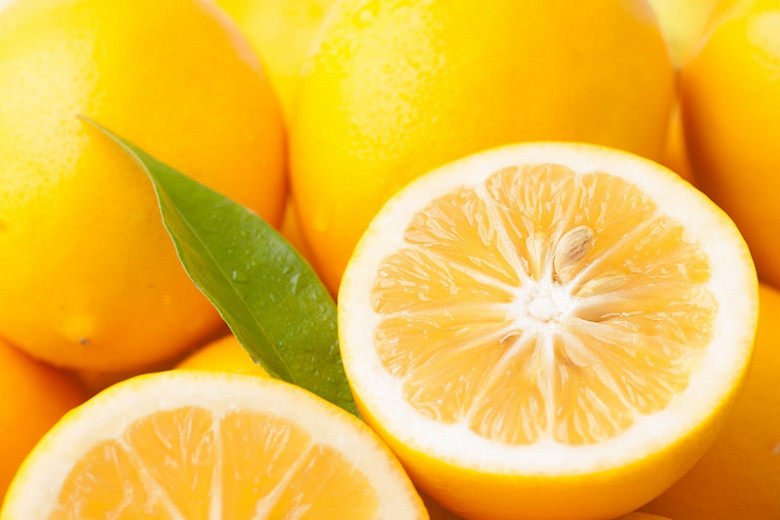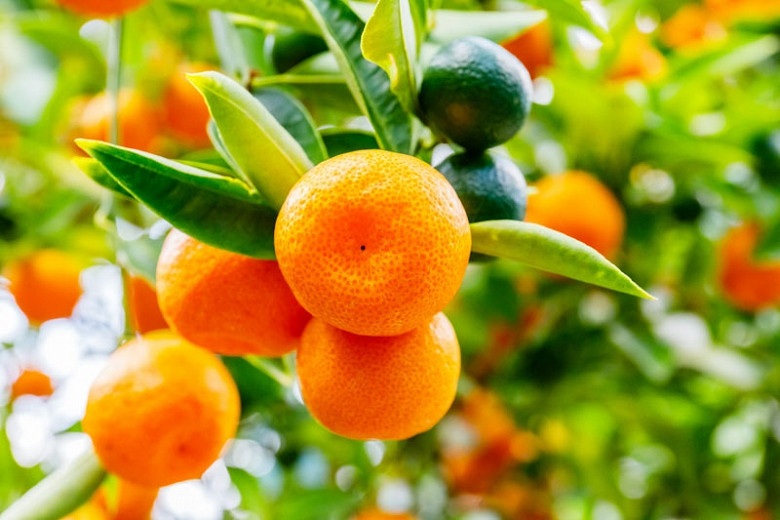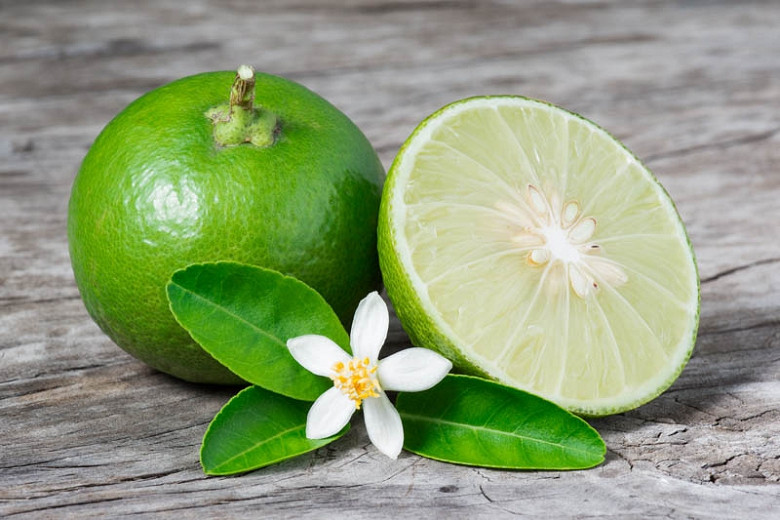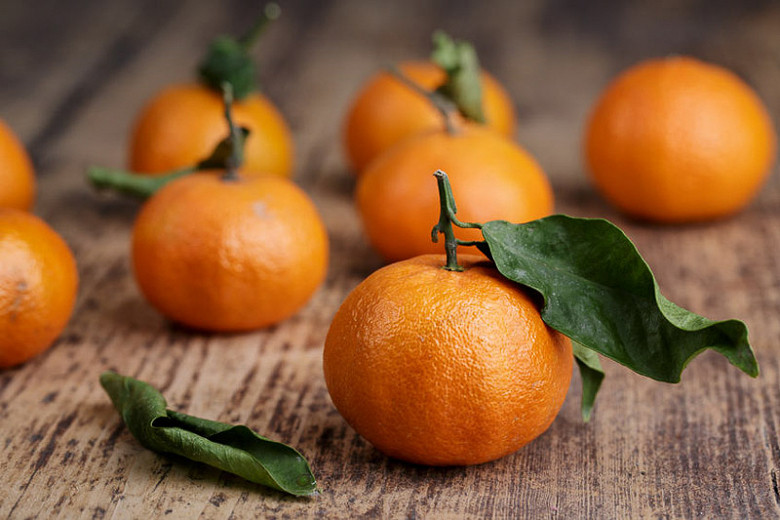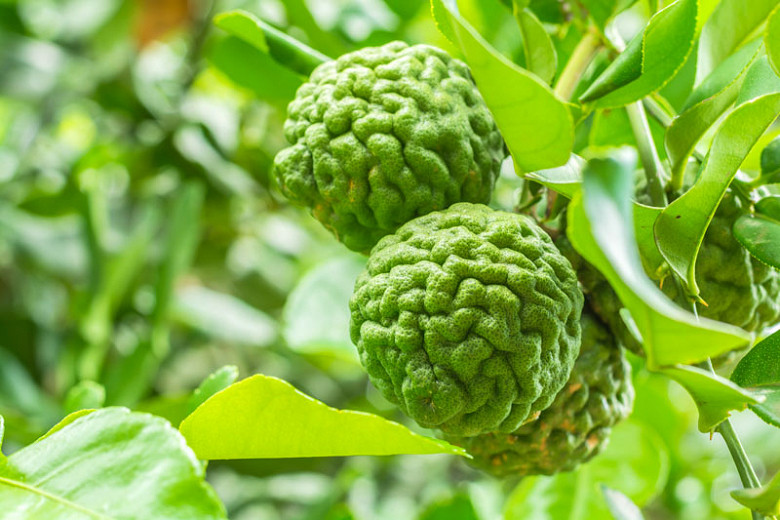Citrus × latifolia Bearss Lime (Persian Lime)
Citrus × latifolia 'Bearss Lime'(Persian Lime) is a dwarf, nearly thornless evergreen shrub prized for its oval fruit, 2-3 in. across (4-6 cm), with juicy light greenish-yellow pulp. Vivid green and glossy when immature, the fruit turns pale-yellow when ripe. It is aromatic, juicy, acid, but without the distinctive bouquet of the Key lime. It is bigger and seedless, with a lower acidity and a thicker rind than that of the Key lime (Citrus x aurantiifolia). The slightly fragrant flowers are beautiful with their 5 long white petals, with a light purple tinge on the margins, and their bundled white stamens adorned with yellow anthers. They shine against the evergreen foliage of glossy green, broadly lanceolate leaves. Flowers and fruit appear throughout the year, but are most abundant in winter in the Northern Hemisphere. Moderately vigorous, Bearss Lime boasts nearly thornless, widespread, drooping branches and yields several dozen fruit per year.
- Grows up to 6-15 ft. tall and wide (180-450 cm) when grown in the ground. Grows up to 3-6 ft. tall (90-180 cm) when container grown. However, this Persian Lime can be pruned to any shape or height.
- A full sun lover, this plant is easily grown in fertile, well-drained soils. Needs water regularly but cannot stand flooding or saturated soils. Use citrus fertilizer during the growing season, and less in winter months when days are shorter. Mulch plantings in beds or pots with 1 in. (2.5 cm) of organic material such as ground bark.
- Shrubby by nature, Persian limes can be trained into a small tree with selective pruning.
- Generally disease free. Keep an eye out for the giant swallowtail butterfly caterpillar.
- Propagate by air layering, seeds, and rooting tip cuttings.
- Toxic to dogs, toxic to cats, toxic to horses.
- Native to Western Asia
Requirements
| Hardiness | 9 – 11 |
|---|---|
| Climate Zones | 7, 8, 9, 12, 13, 14, 15, 16, 17, 18, 19, 20, 21, 22, 23, 24, H1, H2 |
| Plant Type | Fruit, Shrubs |
| Plant Family | Citrus |
| Exposure | Full Sun |
| Season of Interest | Spring (Early,Mid,Late)Summer (Early,Mid,Late)FallWinter |
| Height | 3' – 15' (90cm – 4.5m) |
| Water Needs | Average |
| Maintenance | Low |
| Soil Type | Loam |
| Soil pH | Acid, Neutral |
| Soil Drainage | Moist but Well-Drained, Well-Drained |
| Characteristics | Fragrant, Showy, Evergreen, Fruit & Berries |
| Tolerance | Clay Soil |
| Attracts | Birds |
| Garden Uses | Patio and Containers |
| Garden Styles | Informal and Cottage, Mediterranean Garden |

